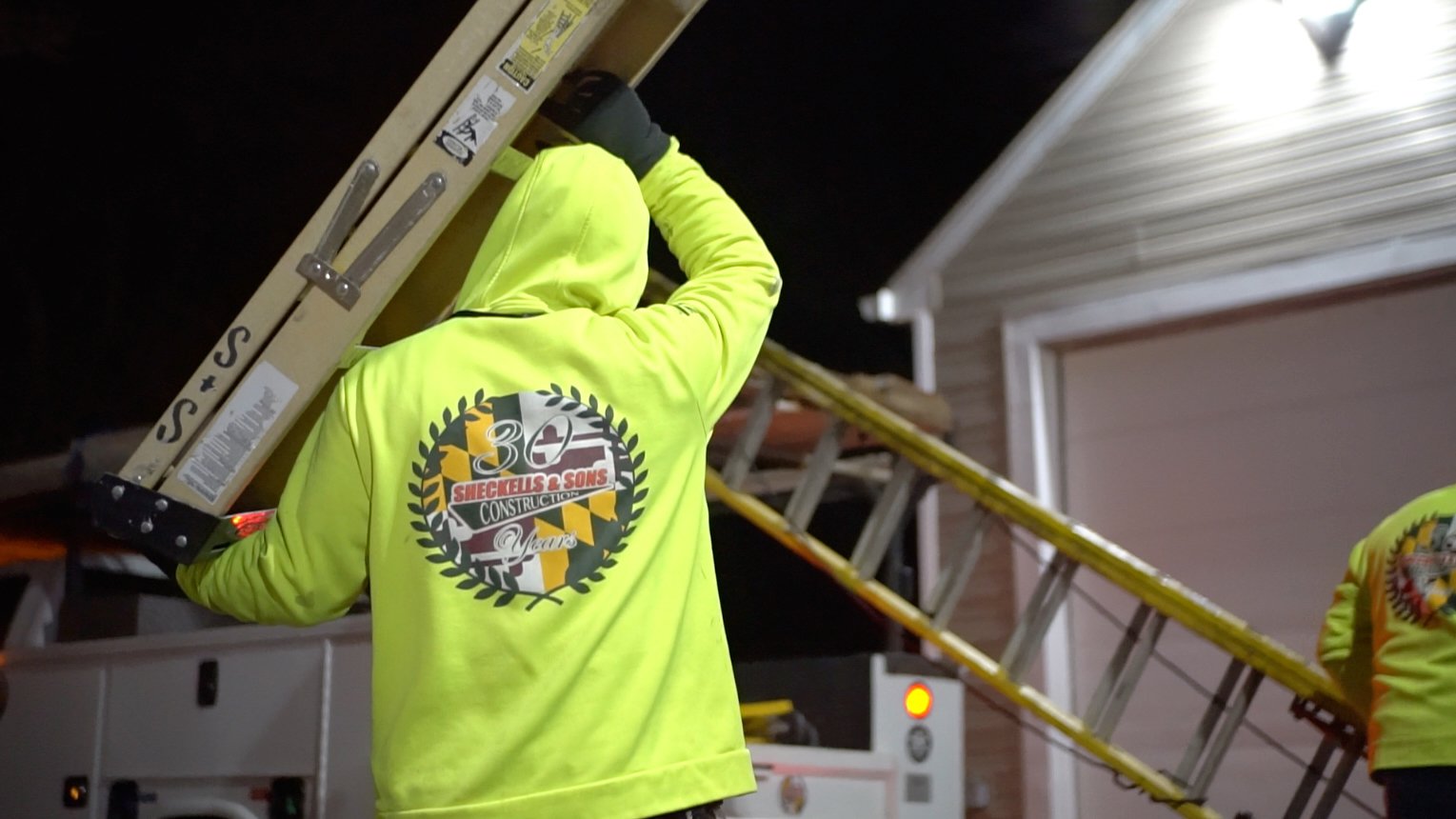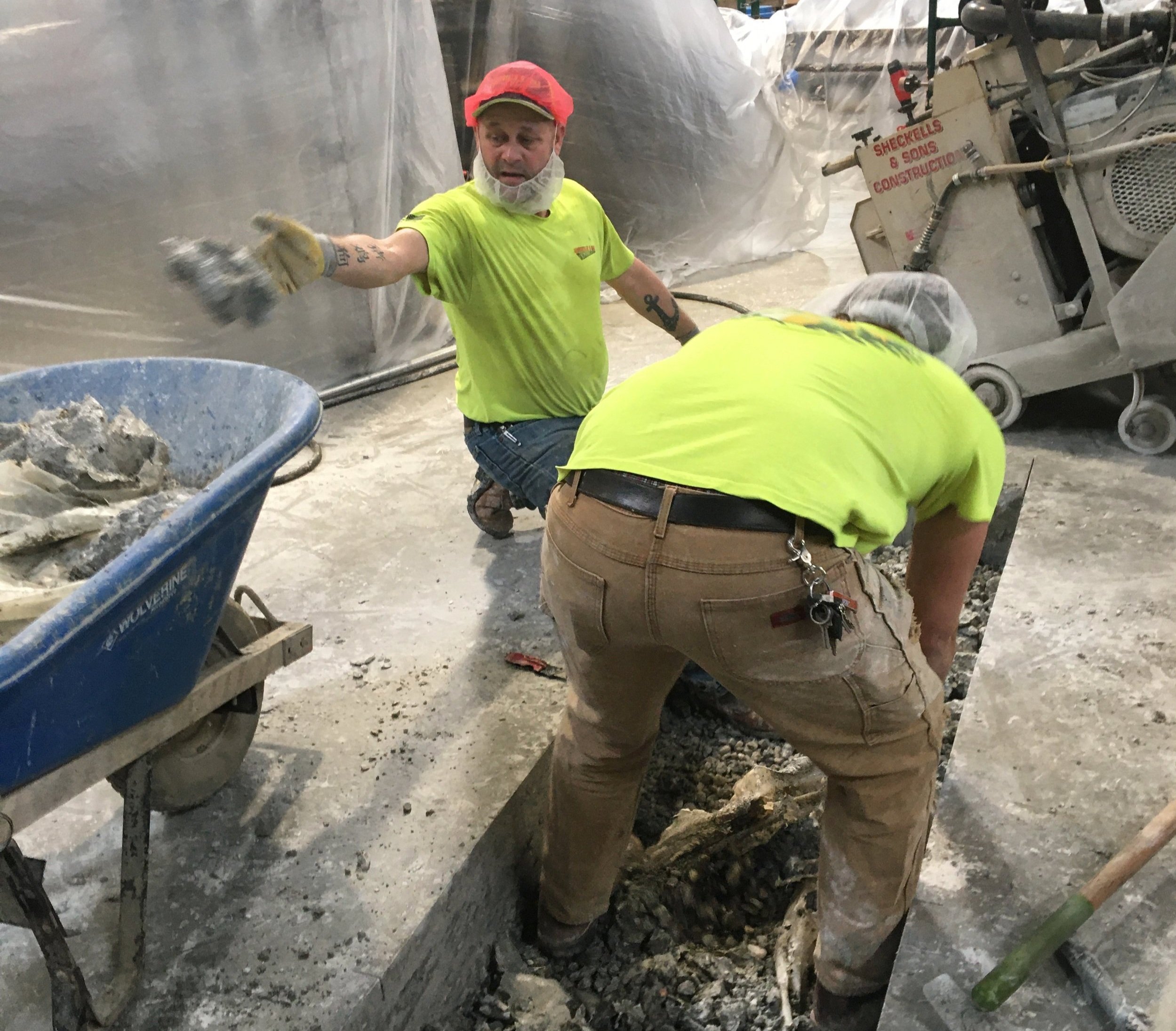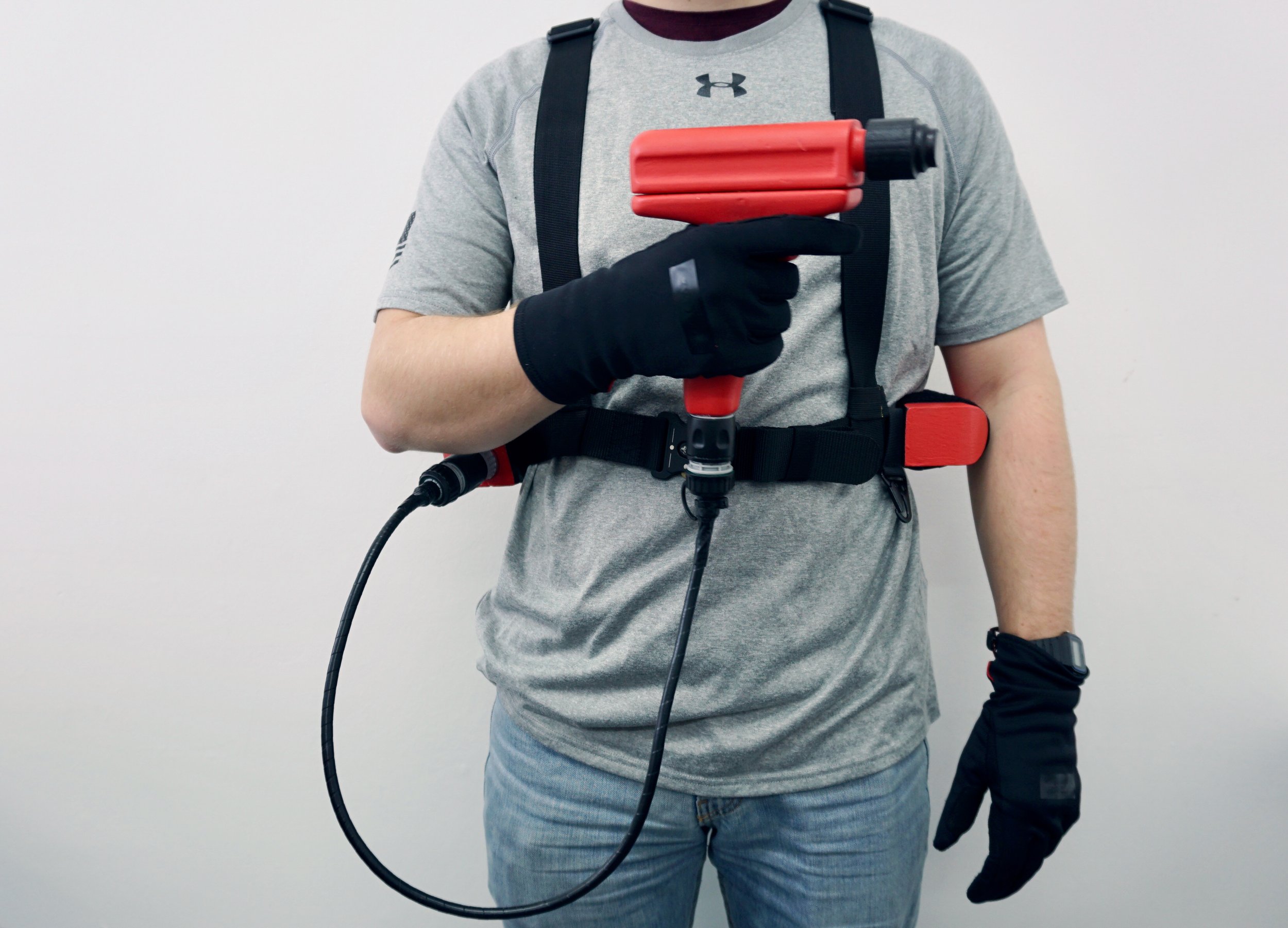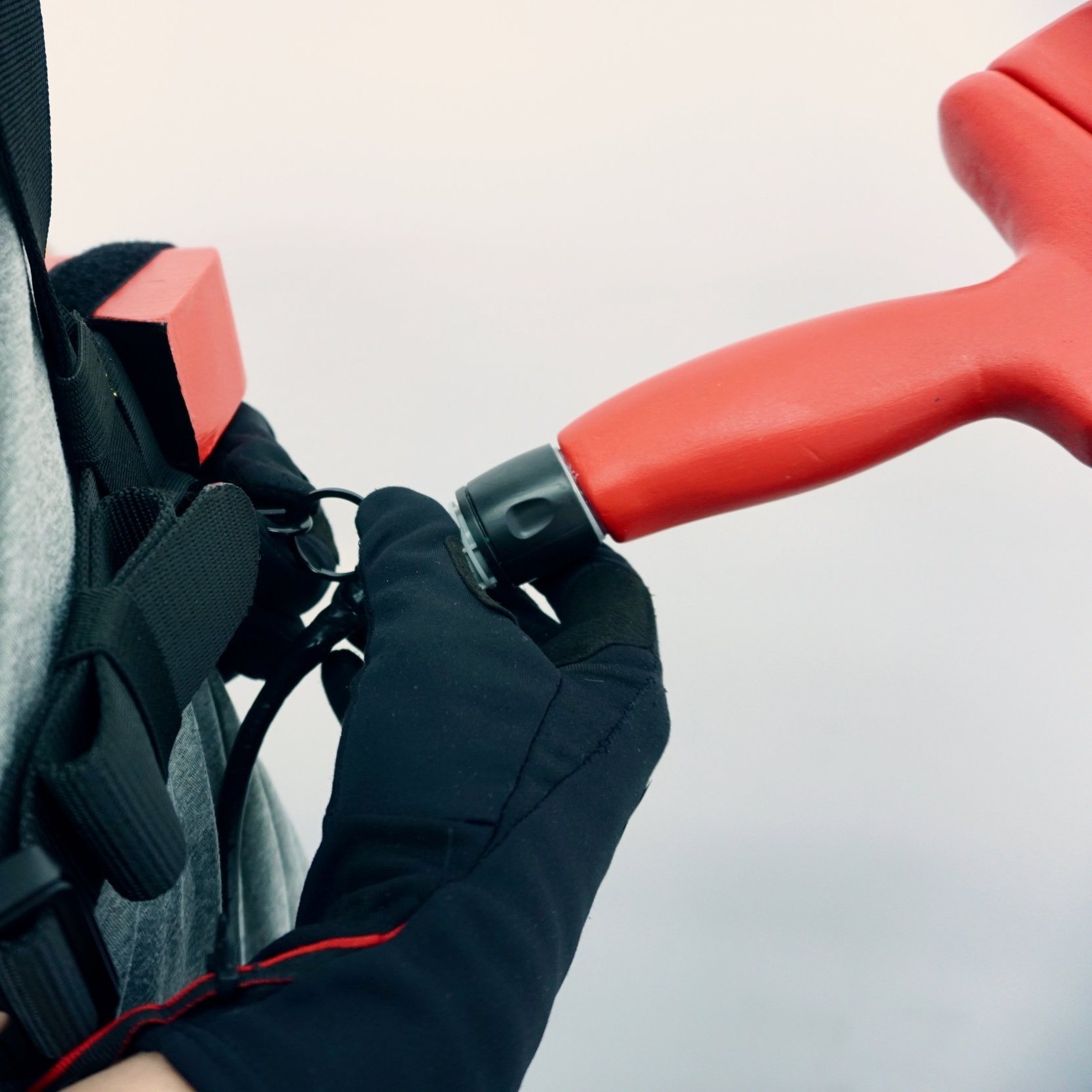Sidekick
How can we improve the long-term health of construction workers?
2020
Sidekick is a concept that dramatically reduces shoulder neck and back strain by reducing the in-hand weight of power tools.
Construction is a dangerous industry to work in, with the job sector reporting 42,000 cases of missed work due to injury in the UK in 2019 - the highest in the country. While there are many products designed to increase safety from sudden injuries like falls, cuts and eye injuries, few products exist to prevent a bigger problem: long-term work injuries.
Working in cramped conditions, doing repetitive motions and absorbing vibrations lead to Work-Related Musculoskeletal Disorders. These often manifest as muscle pain and soreness, which progress to muscle and tissue damage, tendinitis and arthritis, leading to painful surgery or permanent disability. WRMSDs affect not only a worker’s daily tasks, but their quality of life during and after their career.
The aim of this project: Find a way to reduce the prevalence of Work-Related Musculoskeletal Disorders in construction workers by analyzing the workplace and identifying points for intervention.
My research focused on understanding the workplace and finding ways to address this problem. My family has owned a concrete construction business for 30 years. I worked alongside them in the summer of 2019 and later interviewed them for this project. I also reached out to physical therapists, tool designers and a robotics expert to better understand the challenges and opportunities in this area.
Through my research, I identified the shoulder as a particular stress point for workers. The repetitive use of heavy power tools contributes to shoulder, neck and back strain over time, leading to permanent muscle and tissue damage.
Sidekick’s final iteration was a power drill that reduced in-hand weight by 60% compared to normal drills, immensely reducing shoulder, neck and back strain. This was done by moving the motor and battery to the hips and using a flexible driveshaft to turn the drill bit.
The upper portion of the drill swiveled, allowing more comfortable hand positioning when drilling on an angle, overhead or around corners.
Sidekick allowed me to improve my research, outreach, prototyping and user testing skills. It was my most complete project to date and the thoroughness with which I approached it helped guide future work.
Tools/Materials Used:
5-Axis CNC Machine, for final prototype
Autodesk Fusion 360, for 3D model, technical drawings
Workshop Tools (belt sander, bandsaw, cordless drill, drill press, Dremel tool) for initial prototyping
Modeling foam, clay, cardboard for initial prototyping
Thank you to:
Sheckells & Sons Construction
Kevin Sheckells, Sheckells & Sons Construction
Lorri Sheckells, Physical Therapy Assistant, Kaiser Permanente
Louis Vasiliades, Senior Design Engineer, DAP (formerly working at Stanley, Black & Decker)
Dr. Benny Lo, Hamlyn Centre, Department of Surgery and Cancer, Imperial College London
Vicky Aslup, Senior Occupational Therapist, University of Maryland at Upper Chesapeake Medical
David Walker, Business Unit Leader, Hilti Corporation








